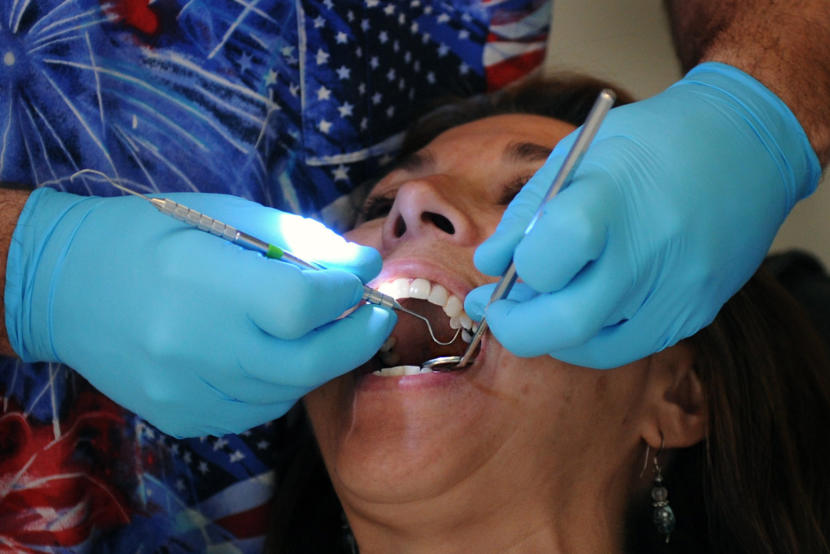
When Gov. Mike Dunleavy and state health officials said elective health care procedures could restart in a phased approach, many of Alaska’s dentists were hoping to take non-emergency patients again.
But they said a state mandate largely prevents that from happening.
State officials said they want to work with the dentists, but point to federal guidelines that dentists are at very high risk of being exposed to the virus.
The mandate said patients must have a negative result of a test for the coronavirus within 48 hours of a procedure that generates aerosols. These tiny floating airborne particles can carry the virus. And they’re produced by many dental tools, from drills to the ultrasonic scalers used to remove plaque.
Dr. David Nielson is the president of the Alaska Board of Dental Examiners, which licenses dentists. In a meeting with the state, he told state Chief Medical Officer Dr. Anne Zink it’s a challenge for patients to get test results within 48 hours of an appointment.
Nielson: “Basically, what that means is, in your view, dentistry is just shut down indefinitely.”
Zink: “That’s not true. That’s not what I feel at all.”
Nielson: “Well, that’s what it says to most of us.”
Nielson said dentists can ensure that patients are safe without testing for the virus.
“We do believe that waiting for the availability of testing to ramp up to the levels that would be necessary will jeopardize the oral health of the public,” he said.
Nielson also said dentists are already taking steps to practice safely and could start taking more patients if they didn’t have to follow the testing mandate.
“Based on everything that we’re doing with all our, you know, really, really intense screening protocols and all the different PPE requirements and stuff like that, that we’re basically good to go, as long as we do all of the things that we’ve already recommended,” he said.
Zink said Alaska is among the first states to reopen non-urgent health care. She says the state’s testing capacity is increasing, and that other groups affected by the mandate are working to have patients tested.
“We are seeing numerous groups, including surgeons, stand up ways to be able to get testing available,” she said.
The state mandate is less restrictive than what’s currently recommended by the federal Centers for Disease Control and Prevention. The CDC said all non-urgent dental appointments should be postponed. The CDC is revising the recommendation, but it’s not clear when there will be new recommendations.
The dental board would like to replace the mandate with guidelines that require that every patient be screened, including answering questions about their travel, symptoms and contacts before an appointment, as well as to be checked for whether they have a fever before an appointment.
Zink noted a problem with relying on screening.
“It’s increasingly challenging to identify COVID patients,” she said. “This is an incredibly sneaky disease that appears to be most contagious in the presymptomatic or early symptomatic people with symptoms that can look almost like anything else.”
The draft framework proposed by the dental board also differs from CDC recommendations on personal protective equipment. The CDC recommends both an N95 respirator and either goggles or a full face shield. The framework said that if goggles or face shields aren’t available, dentists should understand there is a higher risk for infection and should use their professional judgment.
Dentists working to start seeing more patients say they already take precautions against infectious diseases.
Dr. Paul Anderson of Timbercrest Dental in Delta Junction said it would be challenging to have timely tests done for patients who live far from an urban center.
Anderson said dentists have been working to prevent the spread of infectious diseases since at least HIV/AIDS in the 1980s.
“We’ve been following these protocols, and it just seems odd to me that all of a sudden the government feels that it’s necessary to add all of these additional regulations,” he said.
Anderson said screening patients — including checking their temperatures — is a significant safety measure dentists can take.
Zink said the state is open to working with the dental board to revise the mandate, or to issue a new mandate specific to dentistry. It’s not clear if the issue can be resolved before Monday, when the state will begin allowing elective procedures under the mandate.
